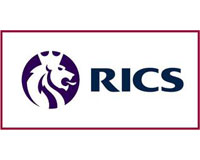Lending volumes reverse Brexit slump
Net lending to UK commercial real estate rose by £474m in September, making up for post-referendum losses, figures from Capital Economics show.
Lending from British banks and building societies slumped in August with a net loss of £226m, but stronger investment volumes bolstered a reversal the following month.
Net lending to UK commercial real estate rose by £474m in September, making up for post-referendum losses, figures from Capital Economics show.
Lending from British banks and building societies slumped in August with a net loss of £226m, but stronger investment volumes bolstered a reversal the following month.
Investment volumes hit £4bn in September, more than double August’s £1.9bn and 5% higher than September 2015. It was the first time since last June that monthly volumes outperformed the 12-month average, which has been falling since hitting a high of £7.1bn in mid-2015.
The average is now at levels last seen at the end of 2013.
With high volumes of investment in 2015, many were expecting a slowdown this year regardless of the referendum. The two sharpest monthly falls since the beginning of 2015, a 50% drop in February this year and a 47% drop in July last year, predated the vote.
Simon Rubinsohn, chief economist at the RICS, said: “The comparison with last year was going to be difficult whether there was a Brexit vote or not. Everyone knew it was going to be hard to sustain those numbers.”
However, September’s investment volumes were dependent on five large deals, including Davidson Kempner’s £500m purchase of the NCP carpark portfolio, which made up more than half of the total. This makes it hard to predict where volumes will go in Q4 this year.
Broad confidence in the UK market
The RICS’ third quarter UK Commercial Property Market Survey released last week showed broad confidence in the market, with the number of investors across all sectors expecting capital value growth outnumbering those expecting decline by 24%. In the medium-term, however, uncertainty has taken a toll on investors, which now expect 7% growth in the next three years across the UK, up from the second quarter’s expectation of less than 1%, but down from 15% in the first quarter.
Comment – Ian Malden, head of valuation, Savills
After the hiatus in the summer, lenders appear to have regained their appetite to lend, with most sectors of the market active.
One exception could be development finance, unless the sponsor and scheme are very credible.
The constraining factor is a lack of opportunities on the back of reduced investment turnover, although investors are considering refinancing as opposed to selling, thereby boosting turnover.
There is greater activity at the smaller-ticket end with enough competitive tension to ensure most deals are financeable, with alternative lenders prepared to go higher up the risk curve.
Some significant big-ticket acquisitions and refinancings are taking place. Loan-to-value ratios remain conservative, given tighter risk management and an uncertain occupational market outlook, pending Article 50 being triggered.
The sheer number of lenders in the market and their willingness to lend, has been confirmed by recent Bank of England statistics which show that the moving average in net lending remains positive. This follows the recent De Montfort survey, which reported a 3% rise in lending at the half year, despite uncertainty before the EU vote.
The case for lending against property, at least for the time being, continues to be compelling, thereby keeping the market liquid.











